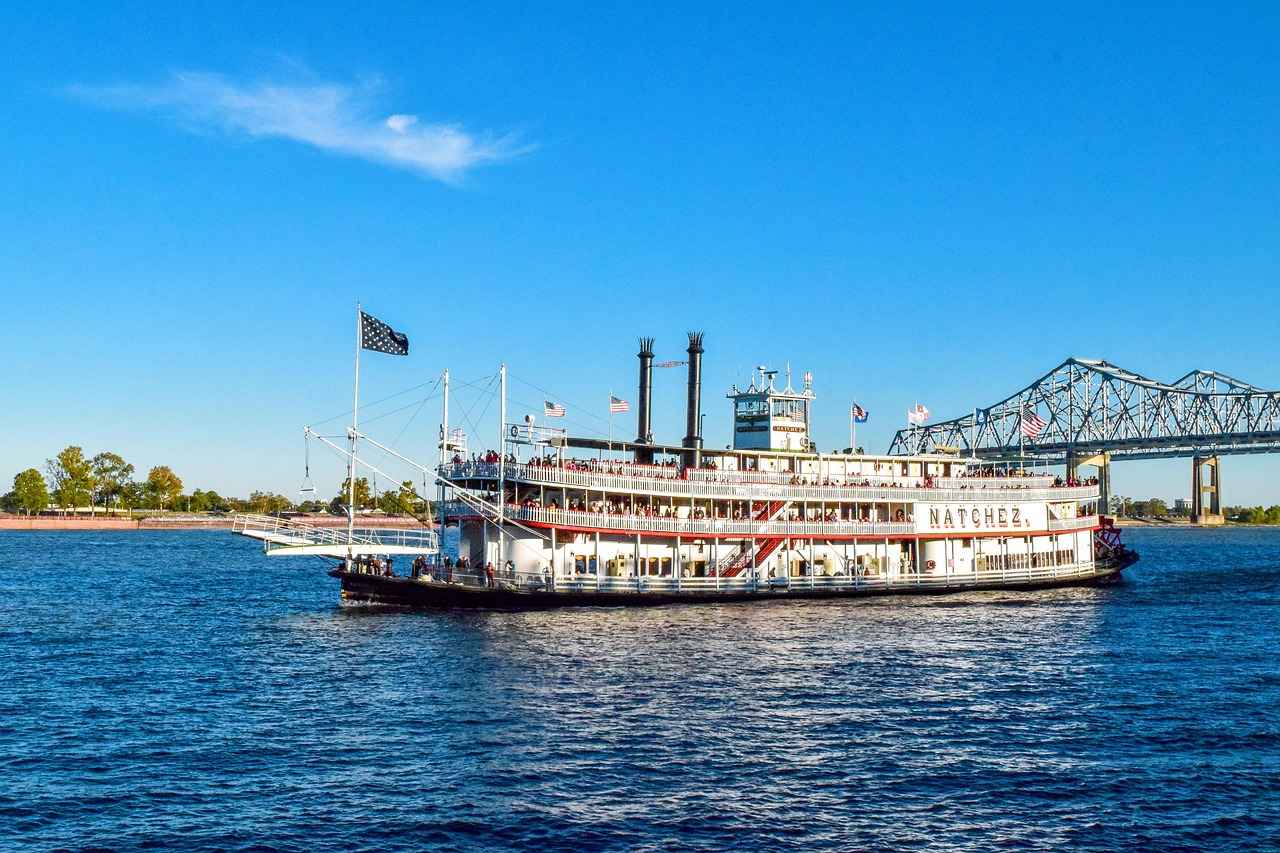This article delves into the intense rivalry between the New Orleans Saints and the Tampa Bay Buccaneers, highlighting key players and significant statistics that have shaped their encounters over the years. Both franchises have rich histories filled with memorable moments and exceptional talent, making their matchups a focal point in the NFL.
Historical Context of the Saints vs. Buccaneers Rivalry
The rivalry between the Saints and Buccaneers dates back to their first meeting in 1977. Over the decades, this rivalry has evolved, marked by fierce competition and dramatic games. The Saints initially struggled against the Buccaneers, but as the teams developed, the balance of power shifted. The introduction of star players and coaching changes have added layers to this rivalry, making each matchup a highly anticipated event on the NFL calendar.
Key Players in the Saints’ Franchise History
- Drew Brees: The Face of the Franchise
- Other Notable Saints Players
Drew Brees is synonymous with the New Orleans Saints, having transformed the team into a powerhouse during his tenure. His leadership on and off the field culminated in a Super Bowl victory in 2010, and he holds numerous passing records that showcase his elite abilities.
Beyond Brees, players like Alvin Kamara and Michael Thomas have made significant impacts. Kamara’s versatility as a running back and Thomas’s record-breaking receptions have been crucial to the team’s offensive strategies.
Key Players in the Buccaneers’ Franchise History
- Tom Brady: A Game Changer
- Other Notable Buccaneers Players
Tom Brady’s arrival in Tampa Bay marked a new era for the Buccaneers. Leading the team to a Super Bowl win in his first season, Brady’s experience and skill have redefined the franchise’s identity and success.
Legends like Derrick Brooks and Mike Evans have also left indelible marks on the Buccaneers’ history. Brooks was a defensive stalwart, while Evans has consistently been a top receiver, contributing to the team’s offensive firepower.
Recent Matchup Statistics
- Offensive and Defensive Stats
- Head-to-Head Record
Recent games between the Saints and Buccaneers have showcased contrasting styles. The Saints often rely on a high-octane offense, while the Buccaneers emphasize a strong defensive presence. Analyzing these statistics reveals patterns that can predict future outcomes.
The head-to-head record between the teams is a testament to their rivalry’s intensity. With each team having periods of dominance, the matches are often closely contested, reflecting the fierce competition that defines their encounters.
Impact of Coaching on Team Performance
- Sean Payton’s Legacy with the Saints
- Bruce Arians’ Approach with the Buccaneers
Sean Payton’s innovative coaching style has left a lasting legacy on the Saints. His strategic mindset and ability to adapt have been pivotal in shaping the team’s success, particularly during their Super Bowl run.
Bruce Arians brought an aggressive offensive philosophy to the Buccaneers, emphasizing a high-scoring approach that has revitalized the team. His leadership has been crucial in fostering a winning culture.
Fan Engagement and Community Impact
- Saints’ Fan Culture and Traditions
- Buccaneers’ Community Outreach Programs
The Saints boast a passionate fan base known for their vibrant traditions, including the famous “Who Dat” chant. This strong community support significantly contributes to the team’s home-field advantage.
The Buccaneers actively engage with their community through outreach programs, strengthening the bond with their fans and showcasing their commitment to social responsibility.
Future Outlook for Both Teams
- Saints’ Prospects for Improvement
- Buccaneers’ Path to Sustaining Success
As the Saints look to rebuild, their focus on drafting young talent and enhancing their roster will be crucial for future success. Strategic moves in the offseason will determine their competitiveness in the coming years.
The Buccaneers aim to maintain their winning culture by developing young players and leveraging their recent successes. Their commitment to player development will be vital as they navigate the challenges ahead.

Historical Context of the Saints vs. Buccaneers Rivalry
The rivalry between the New Orleans Saints and the Tampa Bay Buccaneers is one of the most compelling narratives in the NFL. Understanding the historical context of this rivalry not only enhances appreciation for their competitive dynamics but also reveals the evolution of their matchups over the years. This section delves into the origins, significant milestones, and the evolution of this fierce rivalry.
The Saints-Buccaneers rivalry began in 1977 when the Saints were established as an expansion team. The Buccaneers, having joined the league just a year earlier, were looking to establish their own identity. Their early matchups were characterized by a struggle for dominance in the NFC South. The rivalry was initially one-sided, with the Buccaneers often getting the upper hand in the early years, leading to a sense of frustration among Saints fans.
As the years progressed, the dynamics of the rivalry shifted dramatically. The 1990s marked a turning point for the Saints, who began to build a more competitive team. The rivalry intensified as both teams started to experience periods of success. The Saints, under the leadership of coach Jim Mora, began to establish themselves as a formidable force in the league.
By the early 2000s, the rivalry reached new heights. The introduction of key players such as Drew Brees for the Saints and Warren Sapp for the Buccaneers added layers of intrigue and excitement to their matchups. These players not only brought talent but also a competitive spirit that fueled the rivalry. The games became more than just contests; they were battles for pride and bragging rights within the division.
In recent years, the rivalry has been further amplified by the presence of Tom Brady, who joined the Buccaneers in 2020. His arrival shifted the power dynamics once again, as he brought a championship pedigree to Tampa Bay. The matchups between the Saints and Buccaneers have since become highly anticipated events in the NFL calendar, drawing significant media attention and fanfare.
Statistics reveal the competitive nature of this rivalry. The head-to-head record has fluctuated, with both teams enjoying periods of dominance. The intensity of their matchups is reflected not just in the wins and losses, but also in the physicality and emotional stakes involved. Each game is a culmination of years of history, rivalry, and the quest for supremacy in the NFC South.
In summary, the historical context of the Saints vs. Buccaneers rivalry is rich and multifaceted. It encapsulates the journey of two franchises striving for greatness, marked by iconic players, memorable games, and a passionate fan base. As the rivalry continues to evolve, it promises to remain a significant chapter in the annals of NFL history.

Key Players in the Saints’ Franchise History
The New Orleans Saints have carved a unique niche in the NFL, not only through their passionate fan base but also by producing a wealth of talent over the years. This section delves into the key players who have made significant contributions to the franchise, shaping its identity and success.
Throughout their history, the Saints have been home to numerous standout athletes whose performances have left an indelible mark on the franchise. These players not only excelled individually but also elevated the team’s status in the league, turning the Saints into a formidable contender.
Drew Brees is often regarded as the most iconic player in the history of the Saints. His tenure from 2006 to 2020 was marked by several remarkable achievements, including leading the team to its first-ever Super Bowl victory in the 2009 season. Brees redefined the quarterback position with his exceptional passing ability, football IQ, and leadership skills.
- Impact on Team Culture: Brees instilled a winning mentality within the team, fostering a culture of resilience and determination.
- Record-Breaking Performances: He holds numerous NFL records, including career passing yards and completions, which underscore his significance in the league.
Alvin Kamara has emerged as one of the most dynamic running backs in the NFL since being drafted in 2017. His versatility allows him to impact the game in multiple ways, whether as a runner or a receiver out of the backfield.
- Game-Changing Ability: Kamara’s ability to make plays in critical moments has been pivotal for the Saints, especially in tight games.
- Consistent Production: His consistent performance has made him a fan favorite and a key component of the Saints’ offensive strategy.
Michael Thomas quickly established himself as one of the premier wide receivers in the NFL after being drafted in 2016. His remarkable ability to catch passes and create separation has made him a favorite target for quarterbacks.
- Record-Breaking Season: Thomas set the NFL record for most receptions in a single season in 2019, showcasing his exceptional skills.
- Impact on Offense: His presence on the field opens up opportunities for other players and makes the Saints’ offense more dynamic.
In addition to Brees, Kamara, and Thomas, several other players have made significant contributions to the Saints’ legacy. Players like Willie Roaf, a Hall of Fame offensive tackle, and Jim Mora, a successful head coach, have played crucial roles in shaping the franchise’s history.
- Willie Roaf: Known for his dominant performance on the offensive line, Roaf was integral in protecting the quarterback and paving the way for the running game.
- Jim Mora: As head coach, Mora led the team to its first playoff appearance in 1987, laying the groundwork for future success.
In summary, the New Orleans Saints have been fortunate to have a roster filled with impactful players who have contributed to the franchise’s identity and success. Their legacies continue to inspire future generations of players and fans alike.
Drew Brees: The Face of the Franchise
Drew Brees is not just a name in the history of the New Orleans Saints; he is the embodiment of the franchise’s identity and success. His journey with the team transformed not only the quarterback position but also the culture and aspirations of the entire organization. Brees’ leadership, skill, and resilience played a pivotal role in leading the Saints to their first Super Bowl victory in the 2009 season, a milestone that forever changed the narrative of the team.
When Brees joined the Saints in 2006, the franchise was struggling to find its footing following the devastation of Hurricane Katrina. His arrival marked a turning point, as he quickly became a symbol of hope and determination for the city of New Orleans. Brees’ ability to connect with the community, coupled with his on-field prowess, helped to elevate the Saints from a struggling team to a championship contender.
Under Brees’ guidance, the Saints adopted a high-octane offense that redefined how football was played in the NFL. His exceptional passing accuracy and football IQ allowed him to break numerous records, including becoming the all-time leader in passing yards and completions. These achievements not only solidified his legacy but also inspired future generations of players. The impact of his records extends beyond mere statistics; they represent a shift in the quarterback role, emphasizing not just physical ability but also mental acuity and leadership.
Moreover, Brees’ influence on the team culture cannot be overstated. He instilled a sense of discipline and work ethic that permeated the locker room. His commitment to excellence set a standard for his teammates, fostering a competitive yet supportive environment. This culture of accountability and teamwork became a hallmark of the Saints’ success during his tenure, as players rallied around Brees, motivated to elevate their own performance.
His impact was also felt in the community, where Brees became a philanthropic leader, engaging in numerous charitable endeavors. His efforts off the field, including contributions to education and health initiatives, further endeared him to the fans and solidified his status as a beloved figure in New Orleans.
In summary, Drew Brees is more than just a quarterback; he is a transformative figure in the history of the New Orleans Saints. His records and leadership have redefined the expectations of the franchise, turning it into a powerhouse in the NFL. Understanding Brees’ role in the Saints’ success is crucial for any fan or analyst looking to grasp the significance of this storied franchise.
Impact on Team Performance
Drew Brees’ influence on the New Orleans Saints cannot be overstated. His leadership and exceptional passing skills have not only redefined the quarterback position but have also transformed the Saints into a formidable force in the NFL. When Brees joined the Saints in 2006, the franchise was struggling, having never won a playoff game. However, under his guidance, the team experienced a remarkable turnaround, culminating in their first Super Bowl victory in the 2009 season.
One of the most significant aspects of Brees’ impact is his ability to elevate the performance of those around him. His work ethic and commitment to excellence set a standard for his teammates, fostering a culture of accountability and resilience. Brees was not just a player; he was a mentor. He worked tirelessly to develop the skills of younger players, helping them to reach their potential. This mentorship was crucial, particularly for players like Alvin Kamara and Michael Thomas, who emerged as stars in their own right during Brees’ tenure.
Brees’ statistical achievements further illustrate his impact on the team. He retired as the all-time leader in passing yards and completions, records that speak volumes about his consistency and durability. His ability to read defenses and make quick decisions allowed the Saints to maintain a high-powered offense, which often ranked among the best in the league. Brees’ passing prowess was complemented by his precision; he frequently achieved completion percentages above 70%, a feat that underscores his skill and effectiveness.
Moreover, Brees’ leadership extended beyond the field. He was known for his community involvement and philanthropic efforts, which endeared him to fans and solidified his status as a local hero. His commitment to New Orleans, particularly after the devastation of Hurricane Katrina, helped foster a deep connection between the team and its city. This bond was instrumental in creating a passionate fan base that rallied behind the team, providing them with a significant home-field advantage.
The psychological impact of having a player of Brees’ caliber cannot be ignored. His presence instilled confidence in both the offense and the defense. Players believed in their ability to win games, often coming from behind in dramatic fashion. Brees had a unique ability to remain calm under pressure, which often translated into game-winning drives. His performances in critical moments solidified his legacy as one of the greatest quarterbacks in NFL history.
In summary, Drew Brees’ impact on the New Orleans Saints was profound and multifaceted. Through his leadership, exceptional skill, and community engagement, he transformed the franchise into a perennial contender. Brees not only elevated the performance of his teammates but also changed the culture of the Saints, establishing a standard of excellence that will influence the team for years to come.
Career Achievements and Records
The New Orleans Saints and the Tampa Bay Buccaneers have built a fierce rivalry over the years, marked by memorable matchups and standout performances. One player who has significantly influenced the Saints’ success is Drew Brees. His career achievements and records not only underscore his exceptional talent but also highlight his pivotal role in shaping the franchise’s legacy.
Drew Brees, a name synonymous with excellence in the NFL, holds numerous records that showcase his remarkable skills as a quarterback. Over his illustrious career, Brees amassed an impressive array of statistics, including:
| Record | Details |
|---|---|
| Most Career Passing Yards | Over 80,000 yards, surpassing previous records and setting a high standard for future quarterbacks. |
| Most Career Completions | Over 7,000 completions, demonstrating his accuracy and consistency throughout his career. |
| Single-Season Passing Yards | Set a record with 5,208 yards in a single season, showcasing his ability to perform at an elite level. |
| Super Bowl MVP | Named MVP of Super Bowl XLIV, leading the Saints to their first championship in franchise history. |
Brees’ accolades extend beyond just numbers; they reflect his leadership and dedication to the game. His ability to read defenses, make quick decisions, and execute plays under pressure has been instrumental in the Saints’ success. Notably, his work ethic and commitment to improvement set a standard for his teammates, fostering a culture of excellence within the organization.
Furthermore, Brees’ impact on the Saints’ identity cannot be overstated. He became the face of the franchise, inspiring countless fans and aspiring athletes. His charitable work in the community and his role as a mentor to younger players solidified his legacy as not just a great player, but a true leader.
In addition to his on-field achievements, Brees has been recognized off the field as well. He was named the Walter Payton NFL Man of the Year for his philanthropic efforts, further enhancing his legacy as a role model. His ability to connect with fans and give back to the community has made him a beloved figure in New Orleans and beyond.
As the NFL continues to evolve, Brees’ records stand as a testament to his skill and determination. His career achievements have not only set benchmarks for future quarterbacks but have also left an indelible mark on the history of the league. The impact he has made on the Saints organization and the NFL at large will be felt for generations to come.
Other Notable Saints Players
The New Orleans Saints have a storied history filled with remarkable athletes who have left an indelible mark on the franchise. While Drew Brees is often celebrated as the face of the team, several other players have significantly contributed to the Saints’ success. This section highlights those key figures, including Alvin Kamara and Michael Thomas, and emphasizes their roles in shaping the team’s identity and achievements.
Alvin Kamara burst onto the NFL scene in 2017 and quickly established himself as one of the league’s most dynamic running backs. His unique ability to impact the game both on the ground and through the air has made him a crucial asset for the Saints. Kamara’s versatility allows him to excel in various offensive schemes, making him a nightmare for opposing defenses.
- Rushing Ability: Kamara’s agility and vision enable him to find gaps in the defense, often resulting in explosive plays. He has consistently ranked among the league’s top rushers.
- Receiving Skills: Not only is Kamara a formidable runner, but he is also an exceptional pass-catcher. His ability to line up as a receiver allows the Saints to create mismatches against linebackers and safeties.
- Impact in Key Games: Kamara has delivered standout performances in critical matchups, including multiple games with over 100 rushing yards and several touchdowns, solidifying his status as a game-changer.
Michael Thomas has been a cornerstone of the Saints’ receiving corps since he was drafted in 2016. Known for his exceptional route-running and reliable hands, Thomas has consistently been one of the top wide receivers in the NFL. His contributions extend beyond mere statistics, as he has developed a strong rapport with the quarterbacks, particularly Drew Brees.
- Record-Breaking Season: In 2019, Thomas set the NFL record for receptions in a single season with 149 catches, showcasing his ability to consistently move the chains and convert crucial third downs.
- Clutch Performances: Thomas is known for stepping up in high-pressure situations, making key catches in playoff games and crucial regular-season matchups.
- Leadership and Work Ethic: His dedication to improving his game and mentoring younger players has made him a respected leader in the locker room, contributing to the team’s overall success.
While Kamara and Thomas have shone on the offensive side, Cameron Jordan has been a stalwart on defense. As a defensive end, Jordan has consistently been among the league’s top pass rushers and run defenders.
- Consistent Pressure: Jordan’s ability to disrupt opposing quarterbacks has resulted in numerous sacks and tackles for loss, making him a key player in the Saints’ defensive strategy.
- Leadership on Defense: As a veteran player, Jordan’s experience and work ethic have inspired younger defenders, helping to cultivate a strong defensive unit.
- Pro Bowl Appearances: His consistent performance has earned him multiple Pro Bowl selections, further solidifying his place among the Saints’ all-time greats.
These players, along with many others, have played pivotal roles in the New Orleans Saints’ journey, contributing to their successes and shaping the team’s legacy in the NFL. Their dedication, skill, and leadership have not only advanced the franchise but have also created a lasting bond with the fans, making them beloved figures in New Orleans.

Key Players in the Buccaneers’ Franchise History
The Tampa Bay Buccaneers have a storied history filled with exceptional talent that has significantly shaped the franchise’s identity. This section delves into the most influential players in Buccaneers’ history, highlighting their contributions and the enduring legacies they left behind.
When Tom Brady joined the Tampa Bay Buccaneers in 2020, he brought with him a wealth of experience and a championship mindset. His impact was immediate, leading the team to a Super Bowl victory in his very first season. Brady’s presence not only elevated the performance of his teammates but also transformed the culture of the franchise.
- Leadership: Brady’s leadership style is characterized by his relentless work ethic and commitment to excellence. He instilled a winning mentality within the locker room, inspiring younger players to elevate their game.
- Statistical Dominance: Throughout his career, Brady has set numerous passing records, including most career touchdown passes and Super Bowl MVP awards, solidifying his status as one of the greatest quarterbacks in NFL history.
Derrick Brooks is another key figure in Buccaneers’ history, renowned for his exceptional defensive skills and leadership on the field. As a linebacker, Brooks was pivotal in the Buccaneers’ defensive schemes, helping the team secure its first Super Bowl title in 2003.
- Impact on Defense: Brooks was known for his ability to read plays and make crucial tackles, earning him a reputation as one of the best linebackers of his era.
- Legacy: His induction into the Pro Football Hall of Fame in 2014 is a testament to his contributions and lasting impact on the franchise.
Since being drafted in 2014, Mike Evans has established himself as one of the premier wide receivers in the NFL. His combination of size, speed, and route-running ability has made him a key weapon in the Buccaneers’ offense.
- Record-Breaking Performances: Evans has consistently surpassed 1,000 receiving yards in each of his first seven seasons, setting multiple franchise records along the way.
- Connection with Quarterbacks: His chemistry with quarterbacks, particularly during Brady’s tenure, has resulted in numerous game-winning plays and memorable moments.
Warrick Dunn played a crucial role in the Buccaneers’ offense during his time with the team from 1997 to 2001. Known for his speed and agility, Dunn was a dual-threat running back who could effectively run and catch the ball.
- Contributions: Dunn’s ability to contribute both in the running game and as a receiver out of the backfield made him a versatile asset for the Buccaneers.
- Legacy Beyond Football: Off the field, Dunn is recognized for his philanthropic efforts, particularly in housing initiatives for single parents, further solidifying his legacy in the community.
Ronde Barber is celebrated for his longevity and consistency as a cornerback for the Buccaneers. His intelligence and instincts on the field made him a key component of the team’s defense, particularly during their Super Bowl-winning season.
- Career Highlights: Barber is among the all-time leaders in interceptions and is known for his ability to return interceptions for touchdowns, showcasing his playmaking ability.
- Influence on the Game: His contributions to the Buccaneers’ success have earned him a place in the hearts of fans and a legacy that will be remembered for generations.
In conclusion, the Tampa Bay Buccaneers have been fortunate to have a plethora of talented players who have left an indelible mark on the franchise. From Tom Brady’s unparalleled leadership to Derrick Brooks’ defensive prowess, each player has contributed uniquely to the team’s rich history. Their legacies continue to inspire future generations of players and fans alike.
Tom Brady: A Game Changer
When Tom Brady joined the Tampa Bay Buccaneers in 2020, few could have predicted the seismic shift that would occur within the franchise. His arrival not only transformed the Buccaneers’ fortunes but also reshaped the landscape of the NFL itself. In his inaugural season, Brady led the team to a Super Bowl victory, marking a historic achievement that solidified his legacy as one of the greatest quarterbacks in the history of the sport.
Brady’s impact on the Buccaneers was immediate and profound. His extensive experience and winning mentality infused the team with a new sense of purpose and direction. The Buccaneers, who had struggled to find success in previous seasons, quickly became a formidable force in the league. Brady’s leadership was evident both on and off the field, as he fostered a culture of excellence and accountability among his teammates.
One of the most significant aspects of Brady’s influence was his ability to elevate the performance of those around him. Players like Mike Evans and Chris Godwin flourished under his guidance, showcasing their skills in ways that had not been seen before. The synergy between Brady and his receiving corps was a critical factor in the Buccaneers’ offensive success, resulting in a high-powered attack that could challenge any defense.
From a statistical standpoint, Brady’s first season with the Buccaneers was nothing short of remarkable. He threw for over 4,600 yards and recorded 40 touchdown passes, further cementing his status as a statistical powerhouse. These numbers not only contributed to the team’s success but also reinforced his position among the elite quarterbacks in the league.
| Statistical Category | 2020 Season Stats |
|---|---|
| Passing Yards | 4,633 |
| Touchdowns | 40 |
| Interceptions | 12 |
| Completion Percentage | 65.7% |
Moreover, Brady’s strategic acumen and football IQ played a pivotal role in the Buccaneers’ ability to adapt to various game situations. His knack for reading defenses and making quick decisions under pressure allowed the team to execute complex plays with precision. This adaptability was particularly evident during the playoffs, where Brady led the Buccaneers through a series of challenging matchups, culminating in their Super Bowl triumph against the Kansas City Chiefs.
Brady’s impact extends beyond mere statistics and game outcomes; it lies in the legacy he has created within the Buccaneers organization. His presence has not only revitalized the franchise but has also inspired a generation of players to strive for greatness. The Buccaneers have transitioned from a team with a troubled past to a championship contender, largely due to the influence of one man.
As the Buccaneers look to the future, the challenge will be to maintain the winning culture that Brady has established. His leadership, work ethic, and commitment to excellence will serve as a blueprint for the team moving forward. The Buccaneers are now tasked with building upon the foundation that Brady has laid, ensuring that they remain competitive in the years to come.
In summary, Tom Brady’s arrival in Tampa Bay was nothing short of revolutionary. His influence on the team, the players, and the overall culture of the Buccaneers has been profound. As they continue to navigate the challenges of the NFL, the lessons learned from Brady’s time with the franchise will undoubtedly resonate for years to come.
Leadership and Experience
In the world of professional sports, the impact of a player’s leadership and experience cannot be overstated. This is particularly true in the case of Tom Brady and the Tampa Bay Buccaneers. When Brady joined the Buccaneers, he didn’t just bring his unparalleled talent; he also infused the team with a winner’s mentality that fundamentally transformed their culture and performance on the field.
Brady’s extensive experience, having spent two decades with the New England Patriots, allowed him to approach the game with a level of confidence and strategic insight that few can match. His ability to read defenses, make quick decisions, and execute under pressure became a blueprint for success that his teammates could emulate. This veteran presence instilled a sense of accountability within the Buccaneers locker room, encouraging players to elevate their performance and embrace a mindset focused on winning.
Moreover, Brady’s leadership style is characterized by his relentless work ethic and commitment to excellence. He leads by example, often seen putting in extra hours at practice and studying game film. This dedication not only inspires his teammates but also sets a standard for what it means to be a professional athlete. The Buccaneers players began to adopt this mentality, which contributed to a cohesive team environment that prioritized teamwork and collaboration.
Brady’s impact was evident during the Buccaneers’ successful 2020 season, culminating in their Super Bowl LV victory. The transformation of the team’s culture was palpable; players who previously struggled with consistency began to perform at their best, showcasing the power of leadership. The Buccaneers’ coaching staff also noted significant improvements in areas such as communication and execution, which can be directly attributed to Brady’s influence.
In addition to his leadership on the field, Brady’s experience in high-pressure situations provided the Buccaneers with a distinct advantage. He has faced numerous playoff games and Super Bowl moments, allowing him to guide younger players through the challenges of postseason play. This experience proved invaluable as the Buccaneers navigated the playoffs, where the stakes are higher and the margin for error is smaller. Brady’s calm demeanor and tactical approach helped the team remain composed during critical moments, ultimately leading to their success.
Furthermore, Brady’s ability to connect with his teammates off the field fostered a sense of unity and trust. He made it a point to build relationships with players, understanding that a strong bond can enhance on-field performance. This relational aspect of leadership often goes unnoticed but is crucial in creating a positive team culture. Players felt more comfortable sharing ideas and concerns, leading to better overall team dynamics.
In conclusion, Tom Brady’s leadership and experience have profoundly impacted the Tampa Bay Buccaneers, transforming them into a championship-caliber team. His approach to the game, characterized by hard work, accountability, and strong interpersonal relationships, has set a new standard for what it means to lead in the NFL. As the Buccaneers continue to build on their recent success, the lessons learned from Brady’s tenure will undoubtedly shape the future of the franchise.
Statistical Dominance
In the realm of professional football, statistics often tell the story of a player’s impact on the game. When it comes to Tom Brady, the numbers are not just impressive; they are historic. His time with the Tampa Bay Buccaneers has solidified his legacy as one of the greatest quarterbacks in NFL history. This section delves into the statistical dominance of Brady, examining how his performance has significantly influenced the Buccaneers’ success and the broader landscape of the NFL.
Brady’s passing records are a testament to his skill and longevity in the league. He holds the record for the most career touchdown passes, surpassing Drew Brees with a staggering total that continues to grow. Additionally, his ability to throw for over 80,000 yards is a milestone that few quarterbacks have approached. These records not only highlight his individual prowess but also reflect his consistency and durability over two decades of play.
Brady’s arrival in Tampa Bay marked a turning point for the franchise. In his first season, he led the Buccaneers to a Super Bowl victory, showcasing his ability to elevate the performance of those around him. His statistics during that season were nothing short of remarkable: he threw for over 4,600 yards and recorded 40 touchdown passes. This success can be attributed to his meticulous preparation, leadership qualities, and the ability to perform under pressure. The Buccaneers, who had struggled to find a consistent quarterback for years, found a game-changer in Brady.
One of the defining characteristics of Brady’s career has been his ability to perform in high-stakes situations. His playoff statistics are equally impressive, with numerous records for most wins, touchdown passes, and Super Bowl appearances. Brady’s calm demeanor and strategic mindset allow him to thrive when the game is on the line. His performances in the playoffs have often been characterized by comebacks and game-winning drives, further solidifying his reputation as a clutch performer.
Beyond individual statistics, Brady’s influence on the Buccaneers’ offense has been transformative. His presence has allowed players like Mike Evans and Chris Godwin to reach new heights in their careers. The chemistry he developed with his receivers contributed to a dynamic passing attack that was among the league’s best. Brady’s ability to read defenses and make quick decisions has streamlined the Buccaneers’ offensive strategy, making them a formidable opponent on any given Sunday.
Brady’s statistical dominance has not only impacted the Buccaneers but has also set a benchmark for future generations of quarterbacks. Young players entering the league look up to his work ethic, preparation, and competitive spirit. His records serve as a challenge for aspiring quarterbacks, pushing them to strive for excellence. The legacy he leaves behind will undoubtedly influence how the quarterback position is played in the future.
In summary, Tom Brady’s statistical dominance is a critical factor in understanding his impact on the Tampa Bay Buccaneers and the NFL as a whole. His records, playoff performances, and influence on team success exemplify why he is often regarded as the greatest quarterback of all time. As he continues to add to his impressive resume, the football world watches in awe, eager to see how high he can elevate the game.
Other Notable Buccaneers Players
The Tampa Bay Buccaneers have a storied history filled with remarkable athletes who have made significant contributions to the franchise. While players like Derrick Brooks and Mike Evans are often highlighted, there are several other noteworthy players whose impact on the team and the NFL cannot be overlooked.
- Derrick Brooks
- Mike Evans
- Warren Sapp
- Ronde Barber
- John Lynch
As a cornerstone of the Buccaneers’ defense, Derrick Brooks was a key figure during the team’s Super Bowl-winning season in 2002. Known for his exceptional tackling ability and football IQ, Brooks was a consistent force on the field. His leadership and performance earned him numerous accolades, including being a nine-time Pro Bowler and a member of the NFL’s All-Decade Team for the 2000s. Brooks not only excelled in individual statistics but also played a pivotal role in transforming the Buccaneers’ defense into one of the league’s most feared units.
Since being drafted in 2014, Mike Evans has established himself as one of the premier wide receivers in the NFL. Known for his size, speed, and catching ability, Evans has consistently been a top target for Buccaneers quarterbacks. He has surpassed 1,000 receiving yards in each of his first seven seasons, a feat that showcases his reliability and talent. Evans’ contributions have been crucial in both regular-season and playoff performances, helping the Buccaneers achieve success in recent years.
A dominant force on the defensive line, Warren Sapp was instrumental in the Buccaneers’ defensive success during the late 1990s and early 2000s. His ability to disrupt opposing offenses earned him a place in the Pro Football Hall of Fame. Sapp’s combination of size, speed, and agility allowed him to excel in both run-stopping and pass-rushing situations, making him a dual threat on the field. His legacy continues to inspire future generations of defensive players.
Ronde Barber, a versatile cornerback and safety, is another legendary figure in Buccaneers history. Known for his playmaking ability, Barber holds the franchise record for career interceptions. His knack for creating turnovers was pivotal in many games, and his leadership on and off the field helped shape the Buccaneers’ culture. Barber’s longevity and consistent performance have solidified his place among the all-time greats in franchise history.
Before becoming a successful NFL executive, John Lynch was a hard-hitting safety for the Buccaneers. His aggressive playing style and ability to read offenses made him a key component of the team’s defense during their Super Bowl run. Lynch’s contributions were recognized with multiple Pro Bowl selections and a spot on the NFL All-Decade Team. His transition from player to executive further demonstrates his deep understanding of the game and the impact he has had on the Buccaneers’ organization.
These players, along with Brooks and Evans, have left an indelible mark on the Buccaneers franchise. Their contributions extend beyond the field, influencing the team’s culture and inspiring future generations of players. Each of these athletes has played a significant role in shaping the Buccaneers’ identity and success in the NFL.

Recent Matchup Statistics
The rivalry between the New Orleans Saints and the Tampa Bay Buccaneers has produced some thrilling matchups over the years. Analyzing the statistics from their recent encounters reveals not only the competitive spirit of both teams but also important trends that can influence future games. This section provides a comprehensive overview of their performance in the most recent games, focusing on key metrics that define their rivalry.
In the past few seasons, the Saints and Buccaneers have faced off multiple times, with each game offering unique insights into their strengths and weaknesses. The head-to-head record is a crucial component of understanding their rivalry. In the last five matchups, the Buccaneers have edged out the Saints in terms of wins, showcasing a shift in momentum in this long-standing rivalry.
| Matchup Date | Winner | Score | Key Player |
|---|---|---|---|
| September 2021 | Saints | 36-27 | Jameis Winston |
| November 2021 | Buccaneers | 30-20 | Tom Brady |
| January 2022 | Buccaneers | 31-24 | Leonard Fournette |
| October 2022 | Saints | 26-24 | Alvin Kamara |
| December 2022 | Buccaneers | 28-10 | Mike Evans |
In terms of offensive and defensive stats, the Buccaneers have shown a tendency to dominate in passing yards, largely due to Tom Brady’s exceptional performance. In contrast, the Saints have relied heavily on their strong defensive lineup, which has managed to contain some of the league’s top offenses. The average points scored per game in these recent matchups indicates a competitive balance, with both teams capable of explosive plays.
- Offensive Yards: Buccaneers (average 350 yards/game) vs. Saints (average 300 yards/game)
- Defensive Yards Allowed: Saints (average 280 yards allowed/game) vs. Buccaneers (average 310 yards allowed/game)
- Turnover Ratio: Saints (+5) vs. Buccaneers (-2)
Another significant aspect of their recent matchups is the turnover ratio. The Saints have been particularly effective at forcing turnovers, which has played a crucial role in their victories. This ability to capitalize on mistakes has often shifted the momentum in their favor, allowing them to secure vital wins against the Buccaneers.
As we look ahead, understanding these statistics and trends is essential for predicting future outcomes. The Saints and Buccaneers are likely to continue their fierce rivalry, with each team bringing its unique strengths to the field. By analyzing past performances, fans and analysts alike can gain valuable insights into what to expect in their upcoming matchups.
Offensive and Defensive Stats
In the world of professional football, offensive and defensive statistics serve as critical indicators of a team’s performance. By examining these statistics from recent matchups between the New Orleans Saints and the Tampa Bay Buccaneers, fans and analysts alike can gain valuable insights into which team holds the advantage in various aspects of the game.
When analyzing the offensive stats, key metrics such as total yards gained, points scored, and passing efficiency come into play. For instance, the Saints have often showcased a dynamic offense, characterized by a strong passing game led by their quarterback. Recent games have highlighted their ability to move the ball effectively, often resulting in high-scoring affairs. In contrast, the Buccaneers, particularly during their championship run, have demonstrated their own offensive prowess with a balanced attack that includes both a potent passing game and a strong rushing offense.
On the defensive side, statistics such as sacks, interceptions, and points allowed are crucial for understanding how well a team can thwart its opponents’ efforts. The Buccaneers’ defense has been formidable, especially in critical moments, often forcing turnovers that can turn the tide of a game. The Saints, on the other hand, have shown resilience, particularly in their ability to limit big plays and maintain a solid run defense. This defensive strategy often translates into fewer points allowed, which is essential for securing victories.
Moreover, the yardage differential between the two teams can provide insights into their overall effectiveness. A team that consistently outgains its opponent in total yards usually has a better chance of winning. For example, in their recent matchups, the Saints have often outperformed the Buccaneers in terms of total yards, which correlates with their success in scoring points. However, the Buccaneers have also demonstrated the ability to capitalize on their defensive strengths, turning potential scoring opportunities for the Saints into turnovers.
In summary, analyzing the offensive and defensive statistics from recent games not only helps in understanding the current form of both the Saints and Buccaneers but also provides a glimpse into the future dynamics of their rivalry. As both teams continue to evolve, these statistics will play a pivotal role in shaping their strategies and determining their success on the field.
Head-to-Head Record
The between the New Orleans Saints and the Tampa Bay Buccaneers serves as a significant indicator of the intensity and competitiveness of their longstanding rivalry. Over the years, these two teams have faced off numerous times, creating a rich history filled with memorable moments and fierce competition.
| Season | Winner | Score | Location |
|---|---|---|---|
| 2022 | Buccaneers | 20-10 | Tampa Bay |
| 2021 | Saints | 36-27 | New Orleans |
| 2020 | Saints | 38-3 | New Orleans |
| 2019 | Buccaneers | 24-17 | Tampa Bay |
| 2018 | Saints | 28-14 | New Orleans |
As of the end of the 2022 season, the Saints and Buccaneers have faced each other over 50 times, with the Saints leading the all-time series. This competitive edge has been a source of pride for New Orleans fans, while Tampa Bay supporters have witnessed their team steadily improve in recent years, particularly with the addition of Tom Brady.
The matchups between these two teams have often been tightly contested, with many games decided by a single score. Notably, the rivalry intensified in the late 2000s and early 2010s, when both teams began to see more success in the NFL. The Saints’ explosive offense, led by former quarterback Drew Brees, often clashed with the Buccaneers’ formidable defense, creating a dynamic that kept fans on the edge of their seats.
In addition to the regular season games, the rivalry has also seen its share of playoff matchups. These high-stakes encounters further heightened the tension and excitement surrounding each game. For instance, the Saints’ victory in the 2010 playoffs solidified their dominance during that period, while the Buccaneers’ recent resurgence has reignited the competitive spirit between the two franchises.
The not only reflects the outcomes of individual games but also showcases the evolution of both teams. Each matchup provides insights into their strategies, player performances, and coaching decisions, making it a fascinating aspect of their rivalry.
Furthermore, analyzing the trends in their head-to-head matchups reveals shifts in momentum, such as the Buccaneers’ recent success against the Saints. This dynamic nature of their rivalry ensures that each game is eagerly anticipated by fans and analysts alike, as both teams strive to gain the upper hand.
In summary, the head-to-head record between the Saints and Buccaneers is more than just a tally of wins and losses; it is a narrative of rivalry, pride, and the quest for supremacy in the NFC South. As both teams continue to evolve and compete, fans can expect more thrilling encounters in the years to come.

Impact of Coaching on Team Performance
Coaching is an essential component in the realm of professional sports, particularly in the National Football League (NFL). The decisions made by coaches not only influence game strategies but also shape the overall culture and performance of their teams. In this section, we will delve into the profound impact that coaching has had on the New Orleans Saints and the Tampa Bay Buccaneers, focusing on the legacies of their prominent coaches.
Coaches are often seen as the architects of their teams, crafting strategies that maximize player strengths and exploit opponents’ weaknesses. For the New Orleans Saints, Sean Payton’s innovative offensive schemes revolutionized their gameplay. His emphasis on a dynamic passing attack, complemented by a strong running game, allowed the Saints to become one of the league’s most formidable offenses. Payton’s ability to adapt his strategies based on player capabilities has been a key factor in the team’s sustained success.
In contrast, Bruce Arians of the Tampa Bay Buccaneers adopted a more aggressive coaching style, focusing on vertical passing and high-risk, high-reward strategies. His “no risk it, no biscuit” philosophy encouraged players to take chances, leading to explosive offensive plays. This approach not only revitalized the Buccaneers’ offense but also instilled a winning mentality that resonated throughout the team.
Coaches play a critical role in developing players and enhancing their skills. Under Payton’s guidance, players like Drew Brees flourished, reaching new heights in their careers. Payton’s mentorship helped Brees refine his skills, turning him into one of the most prolific quarterbacks in NFL history. This relationship exemplifies how effective coaching can elevate a player’s performance and confidence on the field.
Similarly, Arians has been instrumental in the growth of young talents within the Buccaneers’ roster. His focus on player empowerment and open communication fosters an environment where athletes can thrive. For instance, quarterback Tom Brady benefited from Arians’ experience, which allowed him to adapt quickly to the team’s system and lead them to a Super Bowl victory in his first season.
The culture established by a coach can significantly impact a team’s performance. Payton’s leadership style with the Saints emphasized resilience and teamwork, creating a strong bond among players. His ability to maintain a positive atmosphere, even during challenging times, has been pivotal in the Saints’ consistent playoff appearances.
Arians, on the other hand, has fostered a culture of accountability within the Buccaneers. His straightforward communication style encourages players to take ownership of their performances, leading to a more cohesive unit on the field. This shift in culture has been crucial in transforming the Buccaneers into a championship-caliber team.
Effective game management is a hallmark of great coaching. Payton’s knack for making critical decisions during high-pressure situations has often tipped the scales in favor of the Saints. His willingness to take calculated risks, such as going for it on fourth down or calling trick plays, has become a defining feature of his coaching style.
Similarly, Arians has demonstrated an astute understanding of game dynamics. His strategic timeouts and play-calling have often turned potential losses into victories. By instilling confidence in his players during crucial moments, Arians has cultivated a team that believes in its ability to win, regardless of the circumstances.
In summary, the impact of coaching on team performance cannot be overstated. The legacies of Sean Payton and Bruce Arians illustrate how effective coaching strategies, player development, and cultural influences can shape the trajectory of a franchise. As the Saints and Buccaneers continue to evolve, the foundational work laid by these coaches will undoubtedly resonate through their teams for years to come.
Sean Payton’s Legacy with the Saints
has become a pivotal chapter in the history of the New Orleans Saints, characterized by a blend of innovation, resilience, and success. His tenure as head coach, which spanned from 2006 to 2021, not only transformed the team’s on-field performance but also revitalized the franchise’s identity within the NFL.
One of the hallmarks of Sean Payton’s coaching style was his ability to implement innovative strategies that kept opposing defenses guessing. He was known for his creative offensive schemes, which often included a mix of traditional plays and unconventional tactics. This adaptability allowed the Saints to flourish, particularly during the prime years of quarterback Drew Brees. Payton’s play-calling was instrumental in helping Brees set numerous passing records, including becoming the all-time leader in passing yards at the time of his retirement.
Payton’s leadership extended beyond just play-calling; he fostered a winning culture within the organization. His emphasis on accountability and teamwork created an environment where players felt empowered to perform at their best. Under his guidance, the Saints experienced a significant turnaround from a struggling franchise to a consistent playoff contender. This cultural shift was particularly evident during the 2009 season when the Saints achieved their first Super Bowl victory, defeating the Indianapolis Colts in Super Bowl XLIV. This win not only solidified Payton’s legacy but also brought immense joy to the city of New Orleans, still recovering from the devastation of Hurricane Katrina.
Moreover, Payton’s impact on the team’s success can be measured through various metrics. The Saints reached the playoffs multiple times during his tenure, showcasing not only talent but also strategic prowess. His ability to develop players, particularly on the offensive side of the ball, led to the emergence of stars like Alvin Kamara and Michael Thomas, who became integral to the team’s identity and success.
Despite facing challenges, including injuries and roster changes, Payton’s resilience as a coach was evident. He consistently found ways to adapt his game plan, ensuring that the Saints remained competitive in a rapidly evolving league. His commitment to excellence and innovation has left a lasting imprint on the franchise, influencing future coaching decisions and player development strategies.
In conclusion, Sean Payton’s legacy with the Saints is defined by his innovative strategies, leadership style, and a profound impact on the team’s success. His contributions have not only shaped the franchise’s history but have also inspired future generations of coaches and players. As the Saints continue to build on his foundation, Payton’s influence will undoubtedly remain a significant part of their journey.
Bruce Arians’ Approach with the Buccaneers
Bruce Arians, a seasoned NFL coach, has significantly transformed the Tampa Bay Buccaneers since his arrival. His coaching style is characterized by a bold and aggressive offensive strategy that prioritizes high-scoring plays and dynamic passing. This approach has not only revitalized the Buccaneers but has also played a crucial role in their recent successes, including a Super Bowl victory in the 2020 season.
Arians emphasizes the importance of a strong offensive line and dynamic playmakers, which has led to a more versatile and unpredictable offense. Under his leadership, the Buccaneers have adopted a no-risk-it, no-biscuit philosophy, encouraging players to take calculated risks. This mindset has empowered quarterbacks like Tom Brady to push the boundaries of their capabilities, resulting in explosive plays that keep defenses on their toes.
One of the most notable aspects of Arians’ coaching philosophy is his commitment to developing talent. He believes in fostering a culture of growth, where players are encouraged to learn from their mistakes and continuously improve. This has been particularly evident in the development of young players, who have flourished under his mentorship. For instance, wide receivers such as Mike Evans and Chris Godwin have emerged as elite talents, significantly contributing to the team’s offensive firepower.
Arians’ approach is not limited to the offensive side of the ball. He has also made strategic improvements to the Buccaneers’ defense, recognizing that a balanced team is essential for sustained success. By collaborating with defensive coordinators and emphasizing a strong defensive game plan, Arians has ensured that the Buccaneers can compete at a high level on both sides of the field.
Moreover, Arians’ leadership style has fostered a sense of camaraderie and accountability among players. He is known for his straightforward communication and willingness to engage with his team, creating an environment where players feel valued and motivated. This has been instrumental in building team chemistry, which is often a decisive factor in high-stakes games.
In conclusion, Bruce Arians’ coaching approach has been a game changer for the Tampa Bay Buccaneers. His aggressive offensive strategy, commitment to player development, and emphasis on teamwork have collectively contributed to the team’s recent achievements. As the Buccaneers continue to build on this foundation, Arians’ influence will undoubtedly be felt for years to come, solidifying his legacy in the franchise’s history.

Fan Engagement and Community Impact
The New Orleans Saints and Tampa Bay Buccaneers boast passionate fan bases that are integral to their identities and success. This section delves into how these fans engage with their teams and the community, shaping the franchises in profound ways.
For the Saints, fan engagement transcends mere attendance at games. The Who Dat Nation is known for its vibrant spirit, which is evident in the unique traditions that have developed over the years. From the iconic tailgating experiences to the deafening cheers in the Caesars Superdome, Saints fans create an atmosphere that is both intimidating for opponents and uplifting for players. The team’s success is often attributed to this unwavering support, which fosters a strong home-field advantage.
- Traditions: Rituals like the second line parades and the playing of “When the Saints Go Marching In” resonate deeply within the community, reinforcing a sense of belonging.
- Social Media Engagement: The Saints have harnessed social media platforms to connect with fans, sharing behind-the-scenes content and engaging in conversations that keep the fan base involved year-round.
On the other hand, the Buccaneers have made significant strides in community outreach, recognizing the importance of building a strong relationship with their fans. The team actively participates in various programs aimed at enhancing local engagement.
- Community Initiatives: The Buccaneers’ community outreach programs include youth football camps, health initiatives, and partnerships with local charities, demonstrating their commitment to making a positive impact.
- Fan Events: Events like Fan Fest allow fans to interact with players and coaches, fostering a sense of connection that extends beyond the football field.
Both teams also leverage their fan engagement to drive charitable efforts. For instance, the Saints have collaborated with local organizations to support disaster relief and education programs, while the Buccaneers have focused on health and wellness initiatives that benefit the community.
Moreover, the influence of fans extends into the economic realm. Both franchises contribute to the local economy through game-day revenues and tourism, as visitors flock to see the teams play. This economic boost underscores the vital role fans play not just in supporting their teams, but in enhancing the overall community.
In summary, the fan engagement and community involvement of the Saints and Buccaneers are crucial to their identities. The passionate support from the Who Dat Nation and the Buccaneers’ community initiatives illustrate how fans can shape a team’s culture and impact the surrounding area. As both franchises continue to grow, their connection with fans will remain a cornerstone of their success.
Saints’ Fan Culture and Traditions
The New Orleans Saints enjoy a vibrant and passionate fan culture that is deeply intertwined with the identity of the team. This section delves into the unique traditions and unwavering support that characterize the Saints’ fan base, highlighting how these elements contribute to the team’s formidable home-field advantage.
Saints fans, affectionately known as the Who Dat Nation, engage in various traditions that reflect their love for the team and the city. One of the most iconic traditions is the chant “Who dat say dey gonna beat dem Saints?” which resonates throughout the Caesars Superdome on game days. This chant not only serves as a rallying cry for fans but also creates an electrifying atmosphere that can intimidate opposing teams.
- Tailgating: The pre-game tailgating scene is legendary, with fans gathering hours before kickoff to celebrate with food, drinks, and camaraderie. This communal spirit fosters a sense of belonging and unity among fans.
- Second Line Parades: Inspired by New Orleans’ rich musical heritage, fans often organize second line parades to celebrate victories or honor the team. These lively events showcase the city’s unique culture and further strengthen the bond between fans and the team.
- Costumes and Face Paint: Many fans express their devotion by donning elaborate costumes and face paint, often in the team’s colors of black and gold. This visual display of support adds to the festive atmosphere of game day.
The loyalty of Saints fans is unparalleled. Through thick and thin, they have stood by their team, demonstrating resilience even during challenging seasons. This unwavering support is palpable in the stands, where fans create an environment that is both welcoming and intimidating.
Moreover, the community involvement of Saints fans extends beyond the stadium. Many fans participate in charitable activities and events, reinforcing the idea that supporting the Saints is not just about football; it’s about being part of a larger community. This sense of belonging enhances the overall fan experience and solidifies their commitment to the team.
The impact of the Saints’ fan culture on home games cannot be overstated. The noise generated by the Who Dat Nation creates a challenging environment for opposing teams, often leading to miscommunication and mistakes. The Superdome is renowned for its deafening atmosphere, making it one of the toughest venues for visiting teams.
Statistics show that the Saints have a significantly higher win percentage at home compared to away games, underscoring the influence of their passionate fan base. The combination of tradition, loyalty, and an electric atmosphere contributes to a formidable home-field advantage that is critical for the team’s success.
In summary, the unique traditions and unwavering support of the Saints’ fan base play a crucial role in shaping the team’s identity and success. The Who Dat Nation embodies the spirit of New Orleans, blending football with culture and community. As the Saints continue to compete at the highest levels, the support of their fans will undoubtedly remain a vital component of their journey.
Buccaneers’ Community Outreach Programs
The Tampa Bay Buccaneers have established themselves not only as a competitive force in the NFL but also as a vital part of their local community. Through various outreach programs, the Buccaneers actively engage with their fans and the surrounding neighborhoods, fostering a sense of unity and support that extends beyond the football field. This section explores the significance of these initiatives and how they contribute to a strong connection with the fan base.
Community outreach programs are essential for professional sports teams. They not only enhance the team’s image but also create a positive impact on the community. The Buccaneers recognize that their success is intertwined with the support of their fans and the community at large. By engaging in outreach initiatives, the team builds trust and loyalty among its supporters.
- Youth Programs: The Buccaneers run various youth programs that focus on education, health, and wellness. These initiatives aim to inspire young individuals to pursue their dreams while promoting a healthy lifestyle.
- Charity Events: The team organizes charity events throughout the year, raising funds for local nonprofits. These events not only provide financial support but also bring the community together for a common cause.
- Volunteer Opportunities: Buccaneers players and staff frequently participate in community service projects, offering their time and effort to help those in need. This hands-on approach shows their commitment to making a difference.
The Buccaneers understand that fostering a strong relationship with their fans is crucial. Through community outreach, they create opportunities for fans to interact with players and staff. Events such as meet-and-greets, open practices, and fan festivals allow supporters to engage with the team on a personal level, enhancing their overall experience.
Community outreach programs have a profound impact on local neighborhoods. The Buccaneers’ initiatives address various social issues, including education and health disparities. By investing in these areas, the team contributes to the overall well-being of the community, making it a better place for everyone.
Many success stories have emerged from the Buccaneers’ outreach efforts. For instance, the team’s youth mentorship program has helped numerous young individuals gain confidence and life skills, empowering them to make positive choices. Additionally, the impact of their charity events can be seen in the support provided to local families facing hardships.
Looking ahead, the Buccaneers are committed to expanding their community outreach programs. They aim to introduce new initiatives that address emerging needs within the community. By continually adapting and evolving their outreach efforts, the team ensures that they remain a vital part of the Tampa Bay area.
In conclusion, the Tampa Bay Buccaneers’ community outreach programs play a vital role in strengthening their connection with fans and positively impacting local communities. Through various initiatives, the team demonstrates its commitment to social responsibility and community engagement, fostering a sense of unity and pride among supporters.

Future Outlook for Both Teams
Looking ahead, both the New Orleans Saints and the Tampa Bay Buccaneers have promising futures, driven by their strategic planning, emerging talent, and evolving team dynamics. This section delves into their current rosters, potential draft prospects, and overall outlook for success in the upcoming seasons.
- Saints’ Roster Analysis
The Saints are currently in a phase of rebuilding, focusing on enhancing their roster to remain competitive in the NFC South. With a mix of veteran players and young talent, they have the potential to create a balanced team. Key positions such as quarterback, wide receiver, and defensive back are areas of focus. The recent addition of promising rookies, coupled with the existing talent of players like Alvin Kamara and Michael Thomas, provides a solid foundation for future success.
- Draft Prospects and Strategies
As the draft approaches, the Saints are expected to target specific needs to bolster their lineup. Analysts suggest that they should prioritize offensive linemen to protect their quarterback and enhance their running game. Additionally, scouting reports indicate that the Saints may look for a future franchise quarterback, considering the age and performance of their current signal-callers. With their strategic approach to the draft, the Saints are poised to make impactful selections that could reshape their future.
- Buccaneers’ Path to Sustaining Success
On the other hand, the Buccaneers aim to build on their recent successes. After winning the Super Bowl, maintaining a winning culture is paramount. The leadership of Tom Brady has been instrumental in setting high standards for performance and professionalism. The Buccaneers are focusing on retaining key players while also exploring free agency to fill gaps in their roster.
- Player Development and Retention
Player development will be crucial for the Buccaneers as they look to sustain their competitive edge. Coaches are emphasizing the importance of developing young talent, particularly in the defensive line and secondary. Retaining core players such as Mike Evans and Chris Godwin will be essential for maintaining offensive potency. The Buccaneers’ front office is also expected to evaluate potential trades that could enhance their roster depth.
- Long-Term Vision and Goals
Both teams have set long-term goals that align with their respective strategies. The Saints are focused on a gradual rebuild while the Buccaneers aim for immediate success. The rivalry between these two teams will continue to evolve, with each franchise looking to outpace the other in talent acquisition and on-field performance.
In conclusion, the future looks bright for both the Saints and the Buccaneers. With careful planning, strategic draft picks, and a commitment to player development, both teams are positioning themselves for success in the coming seasons. Their ability to adapt to the changing landscape of the NFL will play a significant role in determining their competitiveness in the years ahead.
Saints’ Prospects for Improvement
The New Orleans Saints are currently in a phase of transition, focusing on rebuilding and enhancing their roster to regain their competitive edge in the NFL. This analysis examines potential draft picks, strategic moves, and overall team development that could significantly improve their performance in upcoming seasons.
Before diving into potential improvements, it is essential to assess the current roster. The Saints have a mix of experienced veterans and promising young players. However, areas such as offensive line depth and defensive backfield require urgent attention. By identifying these weaknesses, the Saints can strategize effectively for the draft and free agency.
The upcoming draft presents a crucial opportunity for the Saints to fill gaps in their lineup. Key positions that need reinforcement include:
- Quarterback: With the future of their current starter uncertain, the Saints may consider drafting a franchise quarterback to lead the team for years to come.
- Wide Receiver: Adding a dynamic playmaker can elevate the offense, especially if they can complement existing stars like Michael Thomas.
- Defensive Back: Strengthening the secondary is vital, particularly against high-powered offenses in the NFC South.
In addition to the draft, the Saints should explore strategic moves in free agency. Targeting players who can fill immediate needs without breaking the bank is key. Potential free agents who fit the Saints’ system and culture could include:
- Offensive Linemen: Experienced linemen can provide stability and mentorship to younger players.
- Defensive Ends: Adding depth to the defensive line can improve pass rush and run defense.
- Veteran Quarterback: If the team decides to draft a young quarterback, having a reliable veteran can ease the transition.
The coaching staff plays a pivotal role in player development and overall team strategy. The Saints need to ensure their coaching staff is equipped to maximize the potential of new recruits. Investing in coaching resources and enhancing training facilities can provide the necessary support for player growth.
In today’s NFL, analytics play a significant role in player evaluation and game strategy. The Saints should leverage advanced metrics to assess potential draft picks and existing players. By integrating data-driven decision-making, they can enhance their scouting process and identify under-the-radar talents.
Finally, rebuilding a winning culture is essential for long-term success. The Saints must focus on creating an environment that fosters teamwork, discipline, and resilience. Engaging with fans and the community can also play a role in revitalizing the team’s identity and spirit.
In conclusion, the New Orleans Saints are at a crossroads, with ample opportunities to improve their roster through strategic draft picks, smart free agency moves, and a commitment to player development. By focusing on these key areas, they can position themselves for a successful return to prominence in the NFL.
Buccaneers’ Path to Sustaining Success
The Tampa Bay Buccaneers have experienced a remarkable turnaround in recent years, culminating in their Super Bowl victory in the 2020 season. As they aim to build on this success, it is crucial for the organization to focus on maintaining a winning culture and prioritizing player development. This article delves into the strategies the Buccaneers are employing to ensure their continued competitiveness in the NFL.
To sustain their winning culture, the Buccaneers are implementing several key strategies:
- Leadership Development: The Buccaneers recognize the importance of strong leadership within the locker room. By fostering leadership skills among players, the team can create an environment where accountability and motivation thrive.
- Team Cohesion: Building a strong team bond is essential for success. The Buccaneers have organized team-building activities to strengthen relationships among players, which can translate into better on-field performance.
- Emphasis on Winning Mindset: The coaching staff, led by head coach Todd Bowles, instills a winning mindset in players. This involves setting high expectations and encouraging a relentless pursuit of excellence.
Player development is a cornerstone of the Buccaneers’ strategy for long-term success. Here are some key aspects of their approach:
- Investing in Training Facilities: The Buccaneers have upgraded their training facilities to provide players with the best resources for physical and mental development. This investment is aimed at enhancing performance and reducing injuries.
- Utilizing Advanced Analytics: The team employs advanced analytics to assess player performance and identify areas for improvement. This data-driven approach allows coaches to tailor training programs to individual player needs.
- Focus on Young Talent: The Buccaneers are committed to scouting and developing young talent through the NFL Draft and free agency. By nurturing promising players, they can build a strong foundation for future success.
A key factor in the Buccaneers’ path to sustaining success is their coaching staff. The team has prioritized hiring experienced coaches who can mentor players and implement effective strategies. The collaboration between offensive and defensive coordinators is vital in creating a balanced team that excels in all phases of the game.
Engaging with the community is another vital aspect of the Buccaneers’ strategy. By fostering strong relationships with fans and local organizations, the team can create a supportive environment that enhances their brand and builds loyalty. Community events, youth programs, and outreach initiatives not only strengthen ties with fans but also promote a positive image of the franchise.
In conclusion, the Tampa Bay Buccaneers are taking a multifaceted approach to sustain their success. By focusing on leadership development, player training, and community engagement, they are laying the groundwork for continued competitiveness in the NFL. With a strong commitment to improvement and a winning culture, the Buccaneers are poised for a bright future.
Frequently Asked Questions
- What is the historical significance of the Saints vs. Buccaneers rivalry?
The rivalry between the New Orleans Saints and Tampa Bay Buccaneers is steeped in history, showcasing intense matchups that have evolved over the years. Understanding this context helps fans appreciate the competitive dynamics that define both teams.
- Who are the key players that shaped the Saints’ franchise?
Notable players like Drew Brees, Alvin Kamara, and Michael Thomas have significantly impacted the Saints’ identity and success. Brees, in particular, is often regarded as the face of the franchise due to his leadership and record-setting performances.
- How has Tom Brady influenced the Buccaneers?
Tom Brady’s arrival in Tampa Bay was a game changer, leading the team to a Super Bowl victory in his first season. His experience and winning mentality have transformed the Buccaneers’ culture and performance on the field.
- What are the recent statistics from Saints vs. Buccaneers matchups?
Recent matchups have shown fluctuating trends in both offensive and defensive stats, reflecting the competitive nature of the rivalry. Analyzing these statistics gives insights into which team currently holds the upper hand.
- How do coaching strategies impact team performance?
Coaching plays a crucial role in shaping a team’s strategy and success. For instance, Sean Payton’s innovative approach with the Saints and Bruce Arians’ aggressive style with the Buccaneers have both significantly influenced their teams’ performances.
- What role do fans play in the identity of their teams?
Fans are the heartbeat of both franchises. The Saints have a passionate fan culture with unique traditions, while the Buccaneers engage in community outreach, creating a strong bond between the team and its supporters.
- What does the future look like for both teams?
Both the Saints and Buccaneers have promising futures ahead. The Saints are focused on rebuilding, while the Buccaneers aim to sustain their recent success through player development and strategic moves.














